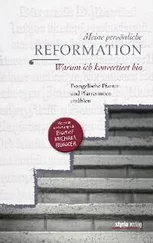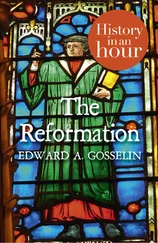1 ...7 8 9 11 12 13 ...20 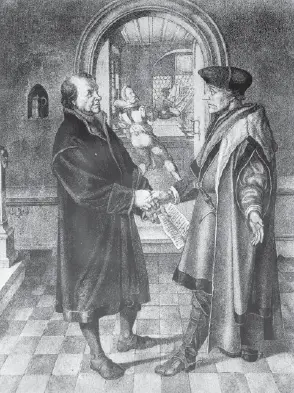
Figure 1.1 Erasmus of Rotterdam in the print shop of his friend Johannes Froben of Basle. Corbis PL279.
Yet despite such valid concerns, the extent and significance of anti-clericalism should not be exaggerated. While there were undoubtedly areas in which such hostility was particularly pronounced – particularly in cities – the clergy were often valued and esteemed, especially in rural areas. Many of the great monasteries of western Europe were respected on account of their social outreach and their significant contributions to the local economy. Yet when all this is taken into account, a rumbling discontent remained, often expressed in what is known as “protest literature” (also known as “grievance literature” or “complaint literature”). Nor should the importance of anti-clericalism for the emergence of the Protestant Reformation be overstated. The Reformation may have reduced the number of clergy through a process of decentralization and the reallocation of some roles traditionally associated with clergy to the laity. Nevertheless, Protestantism retained clergy, even if it may have redefined their responsibilities, and recalibrated their relationship to the laity.
The growth of an educated and literate laity – one of the more significant aspects of the cultural history of Renaissance Europe – led to the publication of an increasing number of criticisms of the church on account of the obvious disparity between what the church was and what it might be or what it was meant to be . The growing level of criticism may well reflect the fact that more people were, through increasing educational opportunities, in a position to criticize the church – rather than any further decline in the ecclesiastical standards of the day. It is true that many religious works of the fifteenth century – often known as a “protest literature” (but sometimes as a “grievance literature” or a “complaint literature”) – paint a picture of growing irritation and protest concerning ecclesiastical corruption and inefficiency. Yet, this might point to levels of expectation of change within the late medieval church as much as declining levels of performance.
However, the reforming movements of this age were not driven purely by a negative discontent. Many reforming movements of the late fifteenth and early sixteenth century took positive inspiration from the institutional simplicity and spiritual integrity of apostolic Christianity. Could not this Golden Age of the Christian faith be regained, perhaps by trying to recapture the simple vision of the church found in the New Testament? Such a program of institutional and moral reform seems to have been the wistful pipe dream of intellectuals throughout half of Europe.
The Need for Doctrinal Reform
Yet there were others who added another demand to this list of long-overdue reforms of morals and practice – a reformation of Christian doctrine. The core religious ideas of the church seemed to have become muddled and unfocused. Many Catholic writers agreed. One of the most interesting developments at the Council of Trent, which set in place the reforming program of the “Catholic Reformation,” was its call for the simplification of the vocabulary and conceptualities of Christian doctrine. There was a concern that scholastic theology, predominant during the Middle Ages, was inaccessible to ordinary people. It was important to use simpler and clearer language to express core Christian beliefs. Trent also appreciated the importance of religious education, and initiated a process of catechization, in which ordinary believers would be helped to grasp the basic themes of the Christian faith.
Yet this demand for the simplification of theological language was not accompanied by any program of review or revision of the prevailing doctrinal consensus of the church. Many Italian bishops at the Council of Trent (Figure 1.2), perhaps influenced by the general dislike of many Renaissance humanists for the technicalities of theology, felt that there was no need for such a review. Reform was restricted to institutional, moral, and pastoral matters – all of which mattered profoundly, of course, but did not engage the concerns expressed by writers such as Luther and Calvin.
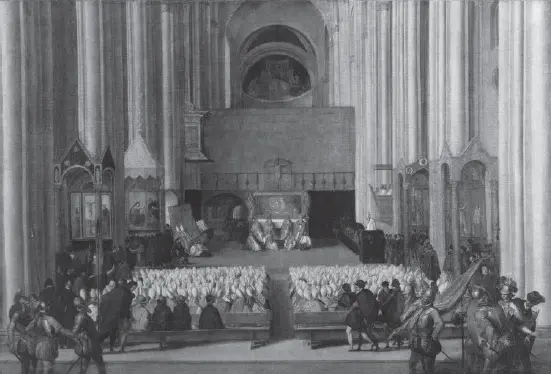
Figure 1.2 The 23rd Session of the Council of Trent, 1563. Bridgeman XIR 33245. The Council of Trent, 4th December 1563 (oil on canvas), Italian School (sixteenth century), Louvre, Paris, France. Formerly attributed to Titian (1488–1576).
To critical observers such as Martin Luther at Wittenberg and John Calvin at Geneva, the medieval church seemed to have lost sight of its intellectual and spiritual heritage. It was time to reclaim the ideas of the Golden Age of the Christian church. The sad state of the church in the early sixteenth century was simply a symptom of a more radical disease – a deviation from the distinctive ideas of the Christian faith, a loss of intellectual identity, a failure to grasp what Christianity really was. Christianity could not be reformed without an understanding of what Christianity was actually meant to be. For Luther, in particular, the morbidity of the late Renaissance church was simply the latest stage in a gradual process of degeneration which had been going on since the early Middle Ages – the corruption of Christian doctrine and ethics.
Thinkers such as Luther and Calvin held that the core ideas that lay at the heart of Christian faith and practice had been obscured, if not undermined, through a series of developments in the Middle Ages. According to these and other reformers of that age, it was time to reverse these changes, to undo the work of the Middle Ages, in order to return to a purer, fresher version of Christianity which beckoned to them across the centuries. The reformers echoed the cry of the humanists: “back to the fountainhead ( ad fontes ),” a call to return to or learn from the Golden Age of the church, in order to reclaim its freshness, purity, and vitality in the midst of a period of stagnation and corruption.
A Failed Attempt to Reform: Conciliarism
But who could reform the church? It was not a new question. Many medieval thinkers, frustrated at the apparent inability of the papacy to initiate a process of review and reform of the church, urged secular rulers to convene a reforming council and force reform upon an institution which seemed unwilling to reform itself. Leading advocates of this approach, often known as “Conciliarism,” included Pierre d’Ailly and Jean Gerson. The matter seemed to have been resolved at the Council of Constance (1414–18), which declared that only a General Council had the necessary authority to reform the church. However, in the end, this attempt to reform the church became mired in procedural wrangling, and power reverted to the papacy.
Important through these developments were, they do not adequately explain the rise of Protestantism. The root and branch reform demanded by so many in the later Middle Ages could easily have taken the form of an internal review of the church’s teachings and practices, not unlike the great Gregorian reforms of the eleventh century. What really needs to be explained is why and how a group of movements working for renewal and reform within the church at the opening of the sixteenth century solidified as an entity outside the church structures of its day, and somehow managed to survive.
Читать дальше
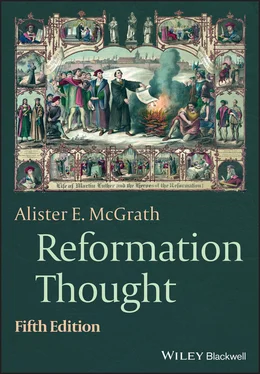


![О Генри - Возрождение Каллиопы [The Reformation of Calliope]](/books/407342/o-genri-vozrozhdenie-kalliopy-the-reformation-of-c-thumb.webp)


